
The Liberty/Paramount Theatre – The Final Curtain

This Adamesque architectural masterpiece was built during the year of 1917, and finally opened its doors as The Liberty Theatre in 1918; a monumental, ornately brilliant structure designed by Detroit architect C. Howard Crane along with associate architects Stanley & Scheibel, looking out over the streets of Central Youngstown. Its exterior; lined with white glazed Terra Cotta ornamentation, complete with swags and pilasters. Inside, a beautiful mezzanine hanging over the wide and elegant auditorium. A catwalk once lifted brilliantly above the stage; now only collects pigeons and rust.

Originally, the theatre could account for a large crowd with its 1800 comfortable seats. The interior was of Adamesque, or Adam style (18th century neoclassical style of interior design and architecture, as practiced by the three Adam brothers from Scotland.) This neoclassical beauty was opened as a Vaudeville house, until purchased and renamed to the Paramount Theatre in 1929 by the Paramount Pictures corporation shortly after The McCrory Group purchasing 60% of the stock for $209,000 in 1922.
Vaudeville was a theatrical genre of variety entertainment popular in the United States and Canada from the early 1880’s until the early 1930’s. Each performance was made up of a series of separate, unrelated acts grouped together on a common bill.
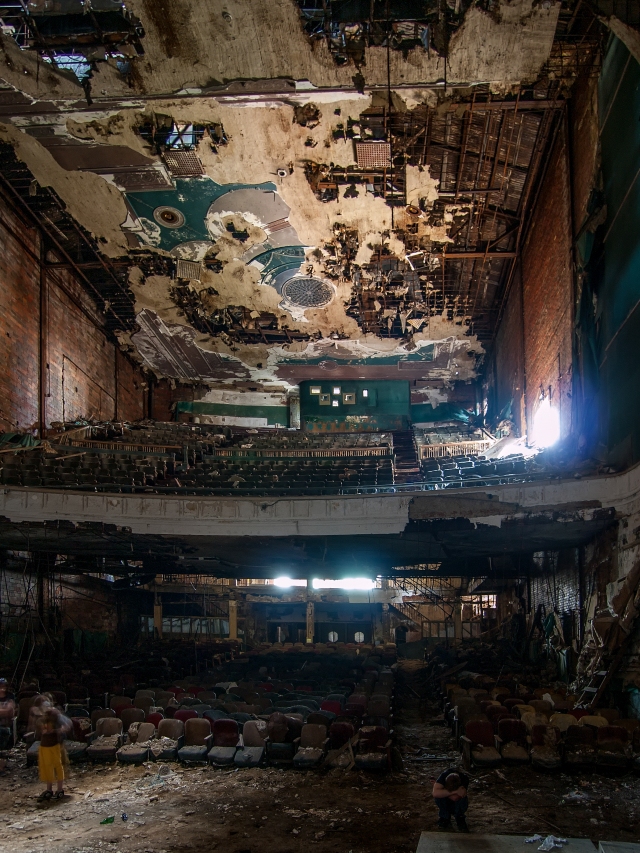
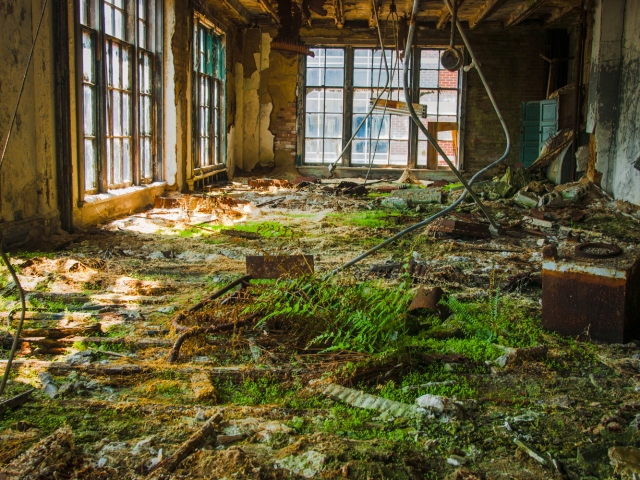
The Paramount company went on to build further into the theatre and modernize it in multiple ways; one among these being the spending of $200,000 on a brand new sound system, allowing them to present the popular new ‘talkies’ (sound-synced films/talking pictures; typically shorts.) The Paramount survived, and was rich in visitors and popularity from 1933-1960 due to film becoming the staple of entertainment for America, and it was shortly after this long journey through to 1960 when Central Youngstown would finally take a dive heading for the worst.
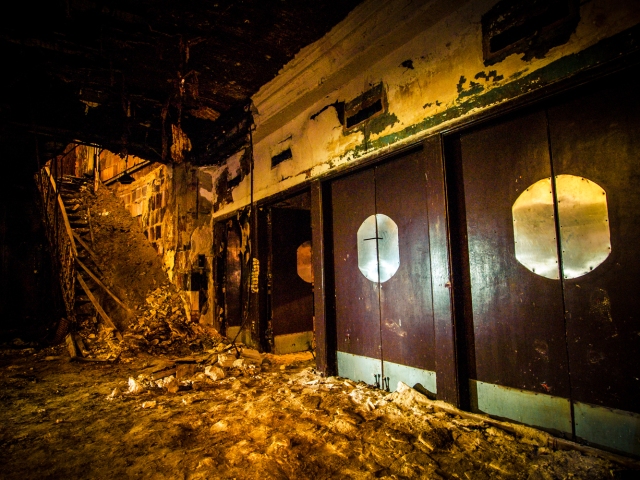
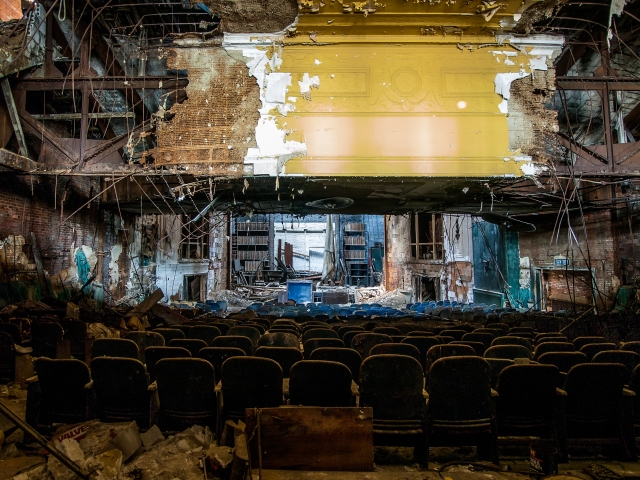
In 1976, the final movie was screened. A Bill Cosby film entitled “Let’s Do it Again.” Quickly after, the final curtain fell with a shuttering, heart-breaking crash as the Paramount closed its doors for the last time and was left a host to the elements around us, quickly falling into a state of disrepair. Later on, in 1997 Ohio One sold the property on land contract to Manhattan Theatre Proprietorship; once again no financial plan could be implemented, and it was sold once again April 21, 2006 to Liberty/Paramount Theatre Youngstown, LLC an investment group lead by Grande Venues Inc.
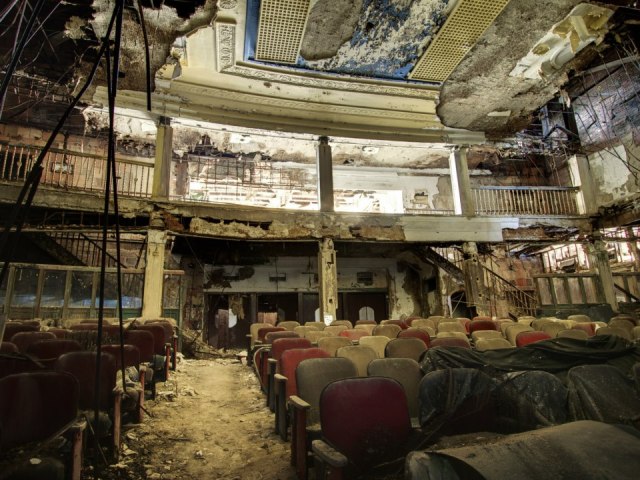
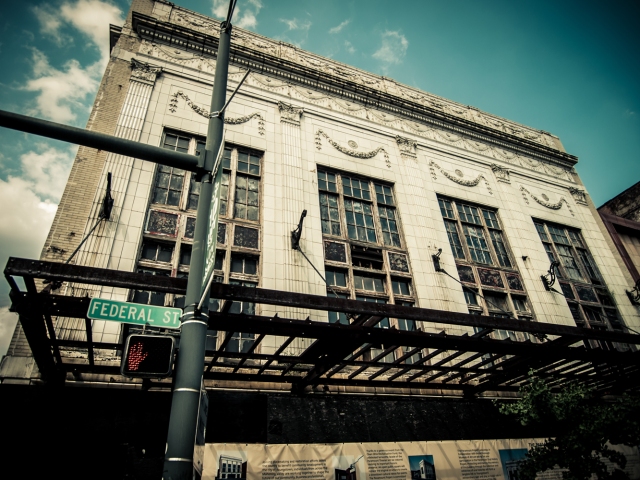
All plans to restore have since fallen through, and it has been purchased by the city and is slated for demolition; the final bow it will take.
Every theatre has a ghost, and while I can’t seem to find anything on this particular location, I feel the story is a ghost in itself. If you were to ask a previous worker, or theatre-goer they would probably spin a tale of brilliance about the history throughout the walls of this architectural wonder that now lies a spirit.
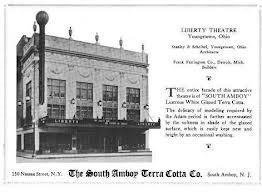
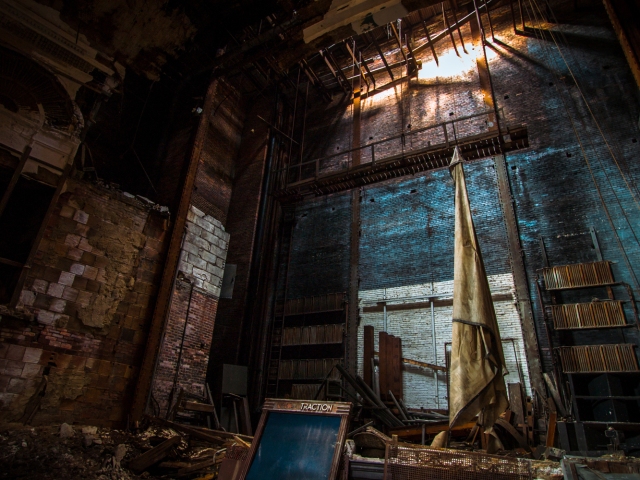
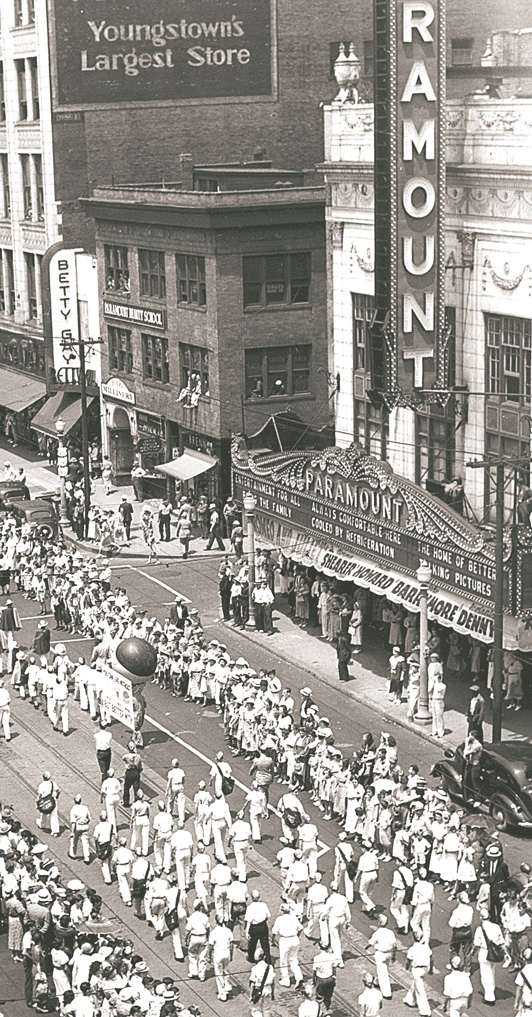

This theatre’s story still clings to the lips of the asphalt, dirt, and wood that it was built upon. It may not say much to deaf ears, but those listening can hear its stories, and unbarred eyes can see its beauty, while those with a padlocked perception of the world around us may never get to see all that it has to offer. Important stories like this should be heard, and not just heard but comprehended. The imagery obtained from wandering our minds of the past can be a small escape from our own lives while remaining part of the story, but normally sits an unused pallet of colors. This structure remains the epitome of beauty of elegance, and the beauty of decay working hand-in-hand to create an awe-inspiring scene. The ceiling and walls surround us, and it’s as if a kaleidoscope had exploded; painting itself onto our surroundings as we stand in fascination below the theatre balcony. A desolate house void of audience, and a quiet proscenium now lying beneath only the falling of history; each crack in the paint growing as its stories unfold into our eyes. Even with chapped lips, the Paramount continues to tell of its adventures. Since being left to fall, it has spent all of its time rehearsing the stories of its life for an audience of none, but continues with strength for those few that care to listen. We need to remember in our own lives, that is (that those few could be) truly what is important.
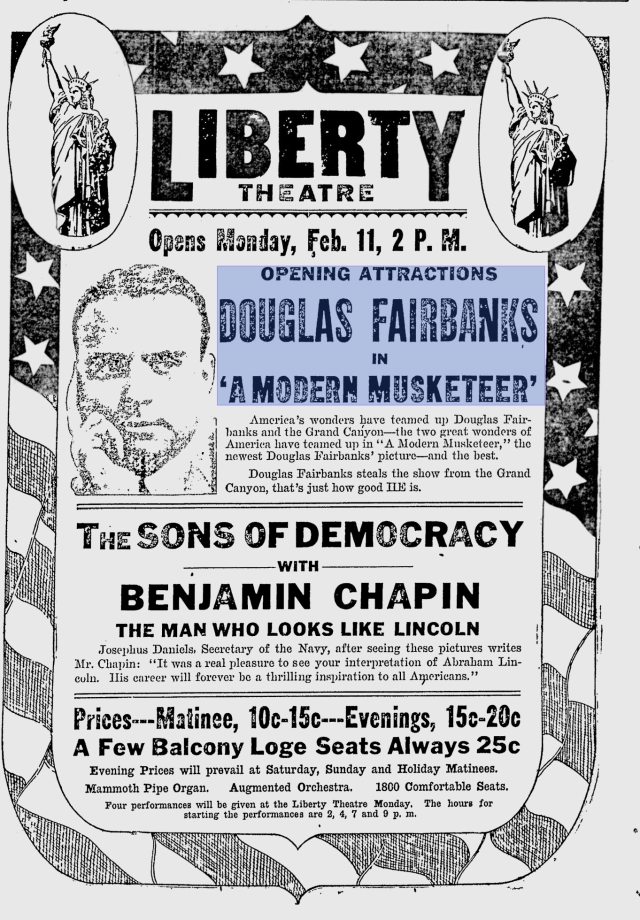
Where once was filled with Vaudeville performances within its 18th century Adamesque architecture is now filled with the fluttering of pigeon wings through stale air and squeaking, rusted catwalks dropping dust from their railings. This theatre may not be wearing its glad rags when it goes out but it will be beautiful just the same.






Wow. I can’t believe the drivel I just read. Next time you should stick to the history of the building instead of editorializing out your ass. “Every theatre has a ghost” hahaha, got a good laugh out of that one.
While I welcome constructive criticism…this doesn’t really fall into that category. Everyone is entitled to their opinion and I’m not bothered by the fact that you hate this…however I’m confused as to why “every theatre has a ghost” sets you off so much…
Because it’s funny. It makes you sound like a fool. Also, “A final bow it will take” Really?
Just pull back on the editorializing a bit and you’ll be fine.
Well, I suppose that’s your opinion. However I don’t see how it makes me sound like a fool. That’s quite a vague response with very little reason other than you just disliking it. Historically, it is said that every theatre contains a ghost, unless you didn’t know that. Anyway, if you don’t like my writing that is fine however I’m not going to just quit writing a part just because you personally dislike it without reasoning.